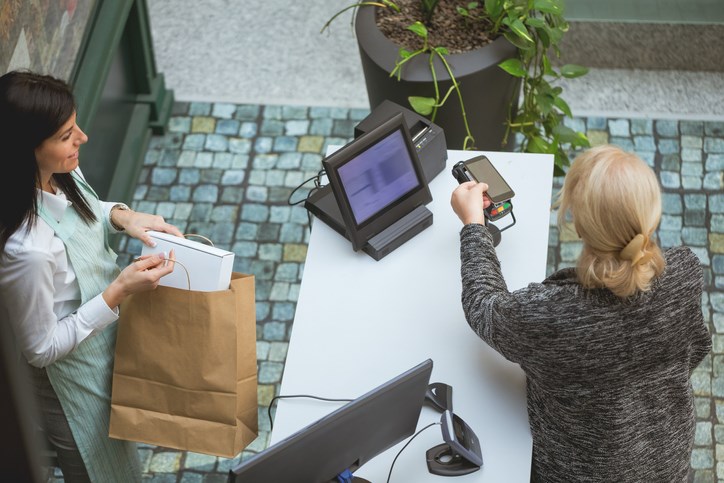The 21st Century has brought many alterations to the way Canadians relate to currency. The penny is gone (something that Americans should probably consider soon), our paper money has been completely transformed into polymer, and some residents are starting to rely on their smartphones for instant purchases.
This month, Research Co. decided to ask Canadians about how they pay for things, how often they dig into their pockets to find few or no coins, and what they would like to see in a future that continues to promise “seamless transactions.”
Across the country, Canadians report that 34% of the payments they make are done with a debit card. Cash is not far behind, being used in 31% of purchases, followed by credit cards at 24%. And while Canadians acknowledge that 3% of their payments involve a cheque, a higher proportion of transactions (8%) are completed through a smartphone.
As expected, Canadians aged 18 to 34 are significantly more likely to use their smartphone for payments (amounting to 18% of their transactions) than their older counterparts (just 3% for those aged 35 to 54 and those aged 55 and over). Some hesitation about hacking and security seems to persist for generation X and baby boomers.
On a regional basis, British Columbians have a fairly balanced mix of purchases with cash (32%), a debit card (31%) and a credit card (26%), and similar proportions are observed in Ontario and Quebec. The debit card is definitely favoured by residents of Atlantic Canada (39%), Saskatchewan and Manitoba (37%) and Alberta (also 37%).
But although three in 10 of our transactions are finalized with cash, seven in 10 Canadians (70%) acknowledge that there was a time in the past month when they did not have any actual money (coins or bills) on them and had to make a purchase of less than $10 with their credit card, debit card or smartphone.
It would seem that baby boomers are more successful at carrying fivers and loose change. While only half of Canadians aged 55 and over (50%) say they had to make a small purchase without actual money, the proportion jumps to 70% for those aged 35 to 54 and 77% for those aged 18 to 34.
The notion of relying on biometrics such as iris scans, fingerprints or palm recognition to pay for things in the future has been discussed prominently over the past two decades. Some debates started with 2002’s futuristic film, Minority Report, in which iris scans have become so common that individual advertisements are played for people as they enter a store.
Even if some Canadians despise the idea of their body parts being scanned for payments, Minority Report offers a gentler look into the possibilities of biometrics than 1989’s Back to the Future Part II, which forecast the existence of “thumb bandits” who rely on amputation, presumably to gain access to bank accounts and entry to off-limits locations.
One of the much-touted advantages of biometrics is fraud reduction. Credit cards can be accessed by others and passwords can be hacked. There would be no better authentication, the firmest proponents say, than your own body. Some of us may already use 3-D facial verification to unlock our smartphones, and customers in some Chinese cities are relying on a so-called “Smile and Pay” application to purchase fast food.
Canadians, for the most part, do not think we will experience this technology any time soon. Only 8% believe we will rely on biometrics to make purchases sometime in the next 10 years.
Significantly higher proportions of Canadians think biometric payments will arrive 11 to 20 years from now (37%) or more than 20 years from now (40%). In addition, 15% of Canadians believe this concept will never materialize, including 23% of those aged 55 and over and 21% of British Columbians.
Regardless of whether this type of technology becomes available, some groups are clearly supportive of it. Across Canada, 49% of respondents to the Research Co. survey say they would like to see people rely on biometrics to make purchases, while 40% disagree and 11% are undecided.
The groups that are more likely to look forward to paying without having to reach for cash, a card or a smartphone are men (57%), Canadians aged 18 to 34 (54%), Quebecers (66%) and Albertans (55%).
At this point, those in the 18-to-34 age group are definitely more comfortable than their older counterparts using a smartphone to pay for things. They are also more likely to welcome a future where transactions can happen through biometrics. Older Canadians are not that convinced, and, for the moment, are holding on to their wallets.



